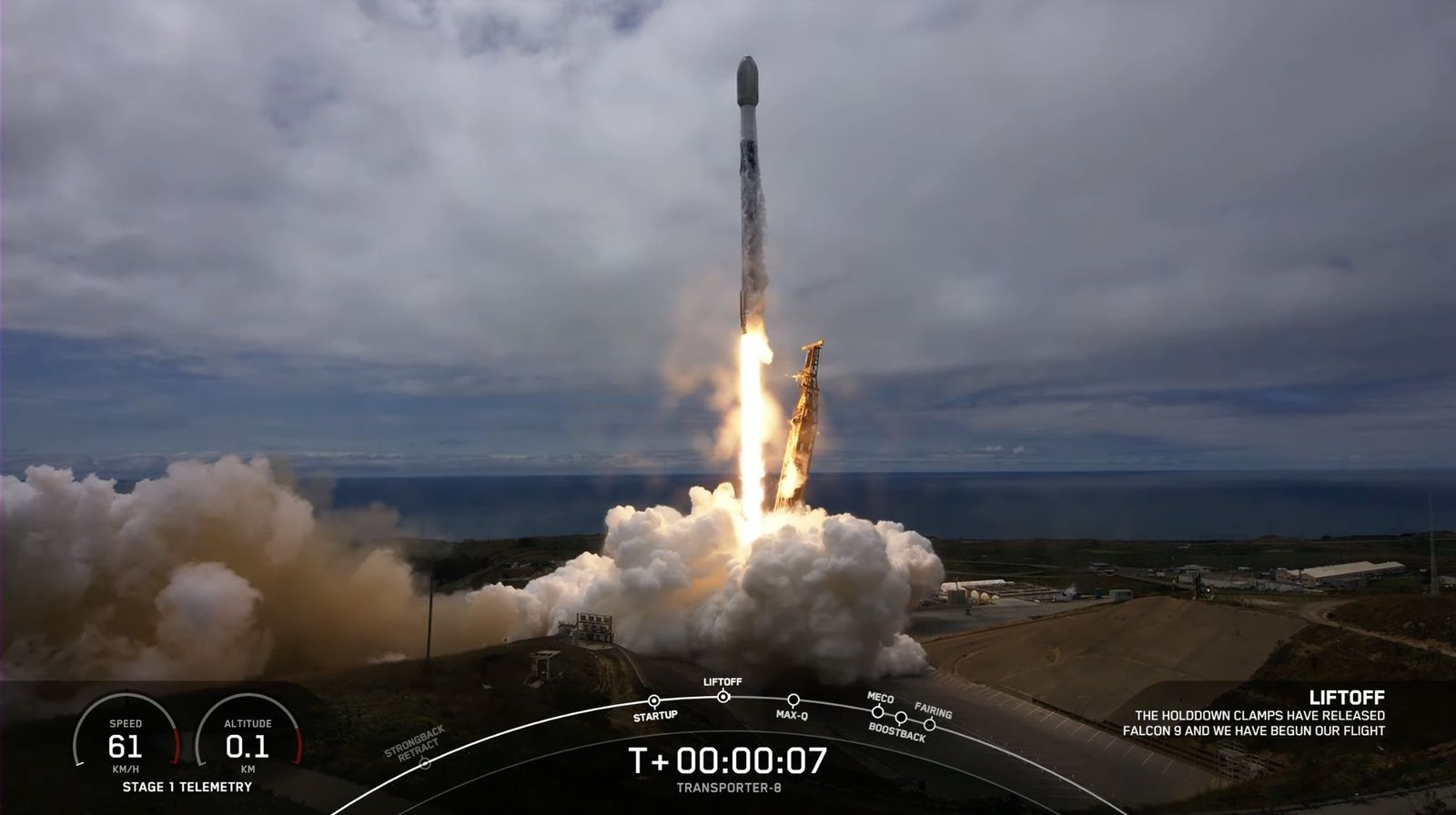SpaceX launches eighth dedicated smallsat rideshare mission
NEW YORK — A SpaceX Falcon 9 launched several dozen smallsats on a dedicated rideshare mission June 12, with customers ranging from the U.S. Space Force to startups deploying their first satellites.
The Falcon 9 lifted off from Vandenberg Space Force Base at 5:35 p.m. Eastern on the Transporter-8 mission. The launch was the second of the day for SpaceX, after another Falcon 9 launched more than 14 hours earlier from Cape Canaveral carrying a batch of Starlink satellites.
SpaceX said Transporter-8, the eighth in its line of dedicated smallsat rideshare missions, carried 72 payloads, a figure that includes orbital transfer vehicles with satellites that will be deployed later. The satellites were deployed in a 525-kilometer sun-synchronous orbit starting an hour after liftoff.
The mission featured a mix of established and emerging satellite developers. Spire deployed three cubesats for collecting weather and tracking data, Iceye four radar imaging satellites and Satellogic four optical and hyperspectral imaging satellites. All three companies used the launch to add to their existing constellations.
Several companies, though, were flying their first spacecraft on Transporter-8. That includes Varda Space Industries, which launched its W-Series 1 spacecraft, built by Rocket Lab. The spacecraft will test manufacturing of high-value products, like pharmaceuticals, in the space environment. Those products will be brought back to Earth in a return capsule on the spacecraft.
The Transporter-8 payload of dozens of smallsats. Credit: SpaceX
Satellite Vu launches its first satellite, HotSat-1, to demonstrate thermal imaging technologies for its planned constellation. Muon Space, which is working a constellation of climate-monitoring satellites, flew its MuSat-1 on this launch. Turion Space launched its first spacecraft, Droid.001, to collect space situational awareness data.
Starfish Space, which is developing satellite servicing technologies, launched its first prototype, Otter Pup, on Transporter-8. The spacecraft, carried on the Orbiter SN3 tug from Launcher, will separate from the tug and then attempt to rendezvous with it.
Several other payloads are also on Orbiter SN3. D-Orbit has its latest ION tug on Transporter-8, but the company did not immediately disclose the payloads on that vehicle.
In addition to companies flying their first satellites, another company flew its first propulsion system on another satellite. Australian company Neumann Space said its first Neumann Drive electric thruster, which uses a solid metal rod as fuel, was part of a satellite built by Skykraft, another Australian company developing a satellite constellation to support air traffic management services.
“Today we have moved our work from the laboratory to space,” said Herve Astier, chief executive of Neumann Space, in a statement after the launch. “Flight heritage will enable us to provide greater detail about the operational performance of our product to customers and ultimately fill the gap existing in the market today.”
The U.S. military used the Transporter-8 mission to launch several satellites. Four satellites for DARPA’s Blackjack program to test satellite constellation technologies were on the launch, as well as three satellites from the Space Force’s Space Systems Command that are part of the Defense Department’s Space Test Program. Two of the satellites, called Modular Intelligence, Surveillance, and Reconnaissance, are imaging cubesats, while the third, XVI, will test the use of Link-16 military communications in space.
SpaceX has attracted significant demand for its Transporter missions, which offer launches three to four times a year at prices significantly less than dedicated launches on small launch vehicles. The company’s website, which lists available launch slots and prices, suggests its Transporter missions are fully booked until the second quarter of 2025.
The launch itself was a milestone for SpaceX. The first stage, making its ninth flight, landed back at the launch site at Vandenberg. That was the 200th landing of a Falcon booster to date.
Source: SpaceNews


